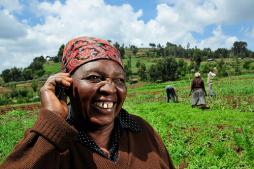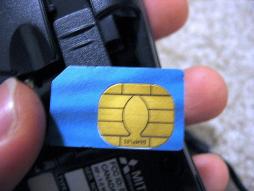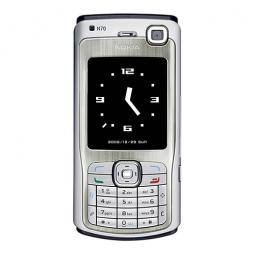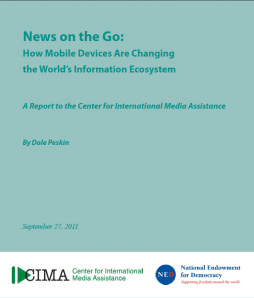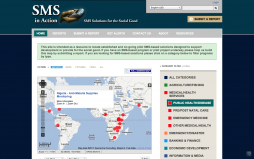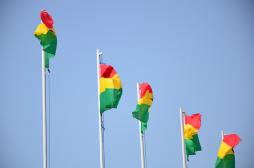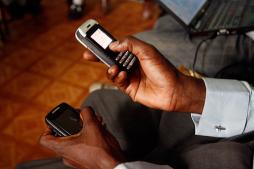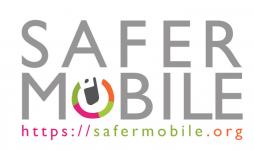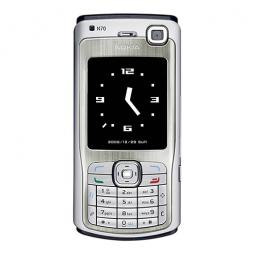Posted by ccarlon on Oct 12, 2011
ICTs for Democracy Information and Communication Technologies for the Enhancement of Democracy – with a Focus on Empowerment data sheet 978 Views
Author:
Association for Progressive Communications
Abstract:
Globally, huge investments are made in ICT as an undisputed and essential component of almost all activities – state and corporate. It is also an integral part of international development cooperation. The rapid spread of ICT – particularly the internet and mobile telephony – is making information available instantly and at low cost to a degree unprecedented in history. It can be used to seek, receive, create and impart information by anyone, at any time and for any purpose. The innovative use of the media has created new forms of citizen journalism which give space to a diversity of voices. In this way, ICT enhances freedom of expression and the right to information, and increases the possibilities for citizen´s participation in decision making processes.
This report examines the potential of information and communications technologies (ICTs) for advancing democracy and empowerment, with a special focus on Kenya, Tanzania and Uganda. Access to and the strategic use of ICTs have been shown to have the potential to help bring about economic development, poverty reduction, and democratisation – including freedom of speech, the free flow of information and the promotion of human rights. Based on signs of current democracy deficits in the case study countries, it is crucial that ICTs be made central to development cooperation and to approaches to advance democracy in the three countries.
Across both urban and rural populations, the predominant tool for communication is the mobile phone, while access to the internet is largely limited to urban areas. The high cost of international internet connectivity – itself a consequence of dependence on satellite connectivity in Uganda and Tanzania especially – means that even within urban areas internet connectivity is the purview of a small well-to-do elite.
Posted by ccarlon on Oct 12, 2011
The Roadmap for Privacy by Design in Mobile Communications: A Practical Tool for Developers, Service Providers, and Users data sheet 1018 Views
Author:
Cavoukian, Ann and Marilyn Prosch
Abstract:
Privacy by Design is a concept that is virally spreading around the globe. The powerful concept of engineering privacy directly into the design of new technologies, business practices and networked infrastructure, in order to achieve the doubly-enabled pairing of functionality and privacy, has gained significant adoption by governments, researchers and industry, in any number of sectors. Now that the PbD paradigm has achieved this high level of acceptance, the next major question to be addressed is – how can PbD best be operationalized?
In this guidance document, we focus on the solutions presented by the panellists – in particular, the parties to which responsibility for the implementation of each were assigned. Distinct trends were noted in the types of solution associated with each party, and it became clear that the panellists’ responses could be collected into a practical tool for developers, service providers and users – a Roadmap for Privacy by Design.
Here, we begin by describing the necessity for such a tool in the mobile industry, and then detail the Roadmap, which begins with the Device Manufacturer, travels through the OS/Platform Developer, Service Provider, and Application Developer, and ends with the responsibilities assigned to Users themselves.
Posted by ccarlon on Oct 12, 2011
Mobile Communications in Zambia data sheet 1054 Views
Abstract:
This report uses AudienceScapes data from a nationally representative survey of Zambia to focus on how people of various social groups access and use mobile communications. The report also showcases how the AudienceScapes survey data can help members of the development community to design and implement more effective programs in technological access, communications and information empowerment.
Beyond measuring basic access and use levels, this report works to answer several key research questions regarding the role of mobile phones in economic and social development in Zambia. These include but are not limited to; what is the potential for SMS-based information services as a development tool, is the mobile market beginning to reach disadvantaged parts of the population, what are the continued barriers to mobile phone access and use, who is using mobile money and is their greater market potential for these services?
Posted by ccarlon on Oct 11, 2011
“SMS for Life“: Use of stock information to improve supply chain data sheet 1277 Views
Author:
Barrington, Jim, Olympia Wereko-Brobby and René Ziegler
Abstract:
Stock-outs of malaria treatments at the health facility level in many sub-Saharan African countries have been a persistent problem for many years. A stock-out is the unavailability of medicine at the health facility. In Tanzania, 93 % of the population are at risk for malaria infection. The number of malaria cases is estimated to be 11 million resulting into 60-80 thousand deaths per year or 220 deaths per day in Tanzania alone. The goal of the SMS for Life pilot project was to develop a flexible and scalable solution to bring up-to-date visibility of anti-malarials within the Tanzanian Public Health Sector with a potential to reduce or eliminate stock-outs of five drugs (four dosage forms of ACTs and Quinine Injectable) in all health facilities in a pilot sample of three districts.
Initiated and led by Novartis, a public-private partnership was established with the Roll Back Malaria Partnership, IBM, Vodafone and the Ministry of Health in Tanzania. This unique partnership developed a solution using mobile phones, SMS messages, internet and mapping technology to visualize weekly stock inventory of Artemisinin Combination Therapy (ACTs) and Quinine Injectable at 129 health facilities and 226 villages. Over the course of one year, the Project Team designed the system, created a data repository, trained key staff and implemented the solution for a 21-week pilot in three districts of Tanzania: Ulanga, Kigoma Rural and Lindi Rural. These districts are located in three different regions and supplied from different Zonal Stores with a catchment population of 1.2 million people.
Posted by EKStallings on Oct 06, 2011
Mobile phones may be one mechanism to increase effectiveness and efficiency for agricultural extension in low-income countries. Agricultural extension, broadly defined as the delivery of information to small-scale farmers, was developed to counteract information asymmetries suffered by farmers with limited access to information sources like landline phones, newspapers, radios and TV programming. This has meant that farmers have not been able to take advantage of innovations in agricultural production (from seed types to information about pest control or crop rotations) and have been largely unable to increase their yields and hence incomes.
While agricultural extension programs have tried to counteract this lack of information, they have also been long plagued by lack of scale, sustainability, relevance and responsiveness. Mobile phones, with their low-cost and capability for quick communication, may resolve many of these obstacles.
Dial “A” for Agriculture: A Review of Information and Communication Technologies for Agricultural Extension in Developing Countries, by Jenny C. Aker, a well-known researcher in the field, provides a broad overview of the shift toward using mobile phones in extension services and offers critical guides for assessing the effectiveness of such programs.
Half a century ago, extension programs were conceived to fill the glaring gap between agricultural innovation and crop yields. Despite great advances in agricultural innovations in the latter part of the twentieth century, farmers in Latin America and especially Sub-Saharan Africa have only seen slight increases in yields. Extension programs,which have largely taken the form of in-person visits and training, have consistently suffered from questions of cost-effectiveness.
Posted by KatrinVerclas on Oct 05, 2011
Recently, we’ve been seeing a lot of hype about citizen reporting using mobile phones during elections. It is often conflated with the term “election monitoring,” but this does a disservice to both citizen reporting and election monitoring, a discipline and field that has been around for some 20 years. These two approaches have markedly different goals, target audiences, and processes. We think it is time for readers to definitively understand what election monitoring is in contrast to citizen reporting, and what the role of mobile phone and mapping platforms are in regard to these two very different forms of engagement during elections. We aim to clearly differentiate between them once and for all.
We also urge the adoption of differing terms - citizen reporting during an election versus systematic election monitoring. Mobile phones, SMS, and mapping platforms play a role in both citizen reporting and election monitoring, of course.
We believe that more clearly distinguishing between citizen reporting during an election and the discipline of systematic election monitoring will better serve organizations that are considering using mobile technology for either of these engagement processes.
Posted by ccarlon on Oct 04, 2011
An Exploratory Study on the Use of Camera Phones and Pico Projectors in Rural India data sheet 2651 Views
Author:
Mathur, Akhil, Divya Ramachandran, Edward Cutrell, and Ravin Balakrishnan.
Abstract:
We explore the potential of using camera phones and pico projectors in rapid creation and presentation of digital content in a development context. A camera phone based content authoring application was designed and deployed with three different user populations in the domains of classroom education and health care.
Our findings show that despite the variations in education levels, cultural background, and technology exposure, users successfully created and presented different forms of digital content using the camera phone and pico projector.
Posted by AnneryanHeatwole on Oct 04, 2011
A new month brings new events, so check out everything that's happening in mobile-for-development land this October!
- 4-7 October STAR-TIDES Technology Demo (Washington, D.C., USA) This free Tech@State event "showcases innovative, low-cost, sustainable technologies for stressed populations, post-war, post-disaster, and impoverished [communities]." Visitors can interact with the technology and there will be live demonstrations throughout the event.
- 4-7 October Planet of the Apps Europe (London, UK) If you're looking for an event that focuses on the business side of mobile development, Planet of the Apps highlights mobile strategies and opportunities for developers, manufacturers, operators, and marketers.
- 6-7 October DroidCon UK (London, UK) Love Android? The latest DroidCon is a two-day event for Android developers; the first day features a community-led Barcamp and a democamp where developers can showcase their work and lead discussions, while the second day features presentations from top Android developers.
- 14-16 October Data Without Borders (New York City, USA) Do you have data you want analyzed? Data Without Borders is hosting a kickoff "datadive," a weekend of bringing together NGOs with data experts for free consultations and data analyzations.
- 18-20 October RIM DevCon Americans (San Francisco, USA) Want to learn how to develop for the BlackBerry platform? The two-day DevCon Americas is a "showcase for the latest innovations and breakthroughs with the BlackBerry Development Platform. Thousands of BlackBerry enthusiasts come together for sessions, demonstrations, hands-on labs and keynotes — all focused on creating mobile applications for the powerful BlackBerry platform."
- 27-28 October Tech4Africa (Johannesburg, South Africa) Tech4Africa looks at mobile, web, and emerging technology in Africa. The event has panel discussions, workshops, and Ignite pitches examining trends in technology and information, specifically for the African market.
Posted by EKStallings on Oct 04, 2011
Dial "A" for Agriculture: A Review of Information and Communication Technologies for Agricultural Extension in Developing Countries data sheet 2343 Views
Abstract:
Agriculture can serve as an important engine for economic growth in developing countries, yet yields in low-income countries have lagged far behind those in developed countries for decades. One potential mechanism for increasing yields is the use of improved agricultural technologies, such as fertilizers, seeds and cropping techniques. Public-sector programs have attempted to overcome information- related barriers to technological adoption by providing agricultural extension services.
While such programs have been widely criticized for their limited scale, sustainability and impact, the rapid spread of mobile phone coverage in developing countries provides a unique opportunity to facilitate technological adoption via information and communication technology (ICT)-based extension programs.
This article outlines the potential mechanisms through which ICT could facilitate agricultural adoption and the provision of extension services in developing countries. It then reviews existing programs using ICT for agriculture, categorized by the mechanism (voice, text, internet and mobile money transfers) and the type of services provided. Finally, we identify potential constraints to such programs in terms of design and implementation, and concludes with some recommendations for implementing field-based research on the impact of these programs on farmers’ knowledge, technological adoption and welfare.
Posted by ccarlon on Oct 04, 2011
Transforming Education: The Power of ICT Policies data sheet 1071 Views
Author:
Alnoaimi, Tayseer, Mario Brun, J. Enrique Hinostroza, Shafi ka Issacs, Robert Kozma, and Philip Wong
Abstract:
The world is experiencing a major shift from an economy and society based on mass production to one based on knowledge creation. The book examines the range of educational experiences, practices, and issues and presents them in a way that can be used by decision makers crafting ICT policy in education. The book begins by considering the broader technological, economic, and social trends that have been sweeping the globe and moving toward an information economy and knowledge society. It examines the dramatic increase in capabilities and use of ICT and their related social and economic impact – positive and negative – in both developed and less developed nations.
The cases analysed in this publication are taken from different regions of the world – Africa, Arab region, Asia and Latin America – illustrating the global dimension of the changes that ICT bring to education systems and policies. The wide diversity offered by the selected countries - Jordan, Namibia, Rwanda, Singapore and Uruguay – in terms of economic and educational development, suggests that the issues at stake are not limited to a particular group of privileged countries. ICT can have a transformative effect on education regardless of the economic conditions, in very advanced school systems as well as in poorly resourced ones. The choice of the policy mix varies according to particular circumstances but the vision and the potential of ICT to transform education is universal. This is the key message that this publication attempts to articulate.
The dissemination and use of information and communications technologies (ICT) in schools has come to be seen by education policy-makers as a significant opportunity. They are attracted to the prospect that ICT can improve student achievement, improve access to schooling, increase efficiencies and reduce costs, enhance students’ ability to learn and promote their lifelong learning, and prepare them for a globally competitive workforce. As the power and capability of computers have increased, as they have become interconnected in a worldwide web of information and resources, as they provide a conduit for participation and interaction with other people, as they have become linked to other devices, and as their costs have come down, policy-makers, particularly those in developing countries, have come to see ICT as a viable, and even dramatic, way of responding to the multiple challenges that they face.
Once policy-makers consider making significant investments in ICT, a host of questions emerge: How many computers are needed in a school? Where should they be located? How should the network architecture be structured? How should the computers be distributed equitably? What additional resources are needed to support their use? What kind of training do teachers need to take advantage of these resources? How can they use them in their teaching? Are these uses effective? Are these even the right questions?
The position taken in this book is that while these questions represent important implementation issues, they are not the questions that should frame ICT policy. ICT can have a greater impact when the policies and programmes designed to implement them are crafted in the broader context of social and economic goals and when they are implemented in support of coordinated change of all the components of the education system, aligned to a vision of economic development and social progress – that is, when ICT policies and programmes support educational transformation.
Posted by AnneryanHeatwole on Oct 03, 2011
Today's Mobile Minute brings you coverage on the future of QR codes in the upcoming U.S. elections, a GSMA study on the effects of cutting mobile taxes in Africa, a look at how Americans prefer to use their mobile phones, the growth of mobile money transfers in Uganda and the world, and a roundup of whom to follow on Twitter for ICT4D and M4D news.
- Mashable investigates how QR codes could be used in the upcoming 2012 U.S. elections. Ideas include organizing field operations, soliciting donations, encouraging celebrity endorsements, cross-promoting the election through merchandise sales and social media, and using QR codes to reach out to new voting blocks during get out the vote drives.
- The GSMA recently released their preliminary findings from research on mobile phone taxation in Africa. The research is still ongoing, and will have a global focus when the final results are released, but the information from Africa shows how lower taxes on handsets can lead to an increase in mobile ownership – in Kenya, after the value added tax on handsets was cut by 16%, sales increased by 200%.
- CNN reports that the popularity of SMSs as the primary means of mobile communication in the United States is rising, while voice call preference is dropping. From a study from the Pew Internet and American Life Project, 53% of Americans still prefer voice calls to SMS, while 31% prefer SMS to calls, and 14% said their preference was flexible depending on the situation. The study also found that 27% of mobile owners never use SMS, so voice is still the leading way to communicate via mobile in the US despite the growing popularity of SMS (only 4% of survey respondents said they only use their phones for SMS and never voice calls).
- In Uganda, mobile payments and mobile money transfers are taking off. According to Business Week, Ugandan telecom MTN reported that they passed more than $200 million in mobile money in August 2011. In related news, The Times of India reported on a new projection from the Ernst & Young consultant firm that estimates that by 2014, roughly $245 billion will be transfered via mobile payments systems worldwide.
- Interested in global development and want to learn more through Twitter? The Guardian has a roundup of twenty Twitter users who tweet about global development, ICT4D, M4D, global change, and good aid practices. If you're looking to follow some new people on Twitter, this is a good start.
[Mobile Minute Disclaimer: The Mobile Minute is a quick round-up of interesting stories that have come across our RSS and Twitter feeds to keep you informed of the rapid pace of innovation. Read them and enjoy them, but know that we have not deeply investigated these news items. For more in-depth information about the ever-growing field of mobile tech for social change, check out our blog posts, white papers and research, how-tos, and case studies.]
Image courtesy Flickr user QiFei
Posted by MelissaUlbricht on Sep 30, 2011
A new report from the Center for International Media Assistance (CIMA) at the National Endowment for Democracy “examines questions about how a global information society might look with mobile media devices at its hub.” The report, News on the Go: How Mobile Devices Are Changing the World's Information Ecosystem, is available for download here.
According to the report, at the end of 2010, more than 4 billion people paid for mobile serivce. By the end of this year, about 5 billion mobile phones will be in service in a world with 7 billion people. The report suggests that the implications of so many people having access to phones are many: for politics, for education, for economies, for civil society, and for news and information.
While it offers several examples of mobile case studies in these various issue areas, the report focuses primarily on the growth of mobile Internet, and, hence, high-end smart phones over basic feature phones.
At MobileActive.org and on the Mobile Media Toolkit, we write often about the role of and potential for the basic feature phone. The CIMA report takes the stance that while 5 billion people will have access to mobile phones, by the end of this year “virtually every phone sold” will be a more high-end device.
Posted by LindsayEllen on Sep 30, 2011
Grassroots Support Organizations and Capacity-Building in M4D: A Case Study of the Jokko Initiative in Senegal data sheet 1607 Views
Abstract:
Fueled by renewed enthusiasm about the potential of new information and communication technologies (ICTs) for development, non-governmental organizations (NGOs) are implementing ambitious projects with mobile technology components in the developing world in a phenomenon commonly referred to as “Mobiles-for-development” or “M4D.”
A participatory approach that responds to the needs and realities of local communities is widely recognized as a necessary component of a successful M4D intervention. However, project failure-especially in sub-Saharan Africa- remains the norm, pointing towards the need for more thorough enumeration of best practices and more rigorous impact evaluation on the part of field-based practitioners. This thesis calls for greater attention to be given to the role of human capacity, which is a precondition for participation in M4D interventions but which also tends to be deficient in rural, poor communities. A greater focus on capacity would entail both assessing capacity- in terms of physical resources and human capabilities- at the local level and including capacity-building in project activities when necessary.
This study employs the human development and capabilities approach and the case study and participant observation methods to examine the efforts of the American NGO Tostan to integrate mobile technology into its non-formal education and empowerment program in rural Senegal. The findings of this study underscore the decisive role played by local capacity and intent and by effective, locally based intermediary organizations, conceptualized in this paper as grassroots support organizations (GSOs), that support the acquisition of the human capabilities needed to harness the empowering potential of mobile technology and other ICTs.
Posted by VivianOnano on Sep 30, 2011
The Effectiveness of M-Health Technologies for Improving Health and Health Services: A Systematic Review Protocol data sheet 2083 Views
Author:
Free,Caroline; Gemma Phillips; Lambert Felix; Leandro Galli; Vikram Patel; Philip Edwards.
Abstract:
The application of mobile computing and communication technology is rapidly expanding in the fields of health care and public health. This systematic review will summarise the evidence for the effectiveness of mobile technology interventions for improving health and health service outcomes (M-Health) around the world.
To be included in the review interventions must aim to improve or promote health or health service use and quality, employing any mobile computing and communication technology. This includes:
(1) interventions designed to improve diagnosis, investigation, treatment, monitoring and management of disease;
(2) interventions to deliver treatment or disease management programmes to patients, health promotion interventions, andinterventions designed to improve treatment compliance; and
(3) interventions to improve health care processes e.g. appointment attendance, result notification, vaccination reminders.
A comprehensive, electronic search strategy will be used to identify controlled studies, published since 1990, and indexed in MEDLINE, EMBASE, PsycINFO, Global Health, Web of Science, the Cochrane Library, or the UK NHSHealth Technology Assessment database. The search strategy will include terms (and synonyms) for the following mobile electronic devices (MEDs) and a range of compatible media: mobile phone; personal digital assistant (PDA); handheld computer (e.g. tablet PC); PDA phone (e.g. BlackBerry, Palm Pilot); Smartphone; enterprise digital assistant; portable media player (i.e. MP3 or MP4 player); handheld video game console. No terms for health or health service outcomes will be included, to ensure that all applications of mobile technology in public health and healthservices are identified.
Bibliographies of primary studies and review articles meeting the inclusion criteria will besearched manually to identify further eligible studies. Data on objective and self-reported outcomes and study quality will be independently extracted by two review authors. Where there are sufficient numbers of similar interventions, we will calculate and report pooled risk ratios or standardised mean differences using meta-analysis.
This systematic review will provide recommendations on the use of mobile computing and communication technology in health care and public health and will guide future work on intervention development and primary research in this field.
Posted by ccarlon on Sep 30, 2011
The Impact of Mobile Phones on Profits from Livestock Activities. Evidence from Puno, Peru data sheet 1965 Views
Abstract:
Besides the work of Jensen (2007), there is little quantitative evidence on the impact that mobile telephony has had on household welfare. In considering the rural household welfare, the possibility is open of finding impacts of information that is accessed via mobile phone in several markets where rural households are usually inserted: agricultural product markets, agricultural services markets, agricultural byproducts; but also in labor markets that often supplement income diversification strategies of these households.
Using a database collected to measure the impact of mobile telephony in the welfare of rural households in Puno, Peru, this paper seeks to focus attention on the markets for agricultural products and by-products. The aim is to measure the contribution that has the use of mobile telephony in the profits resulting from the development of agricultural activities, using econometric techniques associated with quasi-experimental methods of impact assessment. How much does the mobile phone contribute to agricultural earnings? What is the differential impact of mobile phone use vis-a-vis scale variables such as farm size or the number of cattle, or diversification, as the total number of crops, or vertical integration, as the production of agricultural products, on the results of farming?
We expect to find different impacts depending on the type of use of mobile telephony, ie if used for information to affect the agricultural production function or is used to make marketing decisions. The results can help justify public policy efforts to include mobile telephone service as a basic service as well as the development of specific mobile livelihood services for farmers from the mobile communication technology, yet absent in Latin America.
Posted by ccarlon on Sep 30, 2011
SMS in Action is an interactive crowdmap that allows users to submit and search for SMS-based systems that aim (or claim) to have a social impact. The map can be filtered by categories including Agriculture, Health, Emergency/Disaster Services, Banking, Economic Development, Information and Media, Education, and Governance with many of these categories dividing into further subcategories. Reports may also be filtered by report date.
Corresponding markers on the map can be clicked giving the user the option to zoom in/out or get more information. While clearly still in its early stages, the map has a lot to offer. A quick search for disease programs under medical/health returned over a dozen hits across the map. Additionally, users may subscribe to receive location-specific email alerts whenever a report is posted within 20 miles of a designated area.
Posted by AnneryanHeatwole on Sep 30, 2011
ICT4D and M4D projects often focus on how mobiles can be used in developing countries, but the success and usefulness of these projects depends on the value mobile users place on their phones, and how they use them. "We Use It Different, Different: Making Sense of Trends in Mobile Use in Ghana," looks at how Ghanians use mobile phones in their day-to-day lives, mainly focusing on why survey participants started using a mobile phone, how they use it, and how they view the value of mobile phone ownership.
| Featured Research: Making Sense of Mobile Phone Use in Ghana data sheet 2808 Views |
| Countries: |
Ghana
|
Posted by bexband on Sep 26, 2011
Aarogyam ICT for Mother and Child Care data sheet 847 Views
Abstract:
‘Aarogyam’ is a Sanskrit word which means "complete freedom from illness”. Aarogyam is an ICT based responsive system which ensures and involves active participation of all key stakeholders viz. local administration, health facilities and doctors, frontline health workers (ASHA (Accredited Social Health Activists), ANM (Auxiliary Nurse Midwife), and AWW (Angan Wadi Workers)), village heads and beneficiaries, to ensure that a pregnant woman is provided with ANC, PNC and complete immunization throughout the continuum of care. Aarogyam maintains a village wise database of all the beneficiaries (pregnant/lactating women, children up to 5 years) of an area, which gets continually updated with new data generating on the field with the help of front line health workers. The database thus generated is the backbone of the software system used by Aarogyam. This system generates automated alerts in the form of vernacular voice calls/SMS to the beneficiary thus enabling the beneficiary with vital information at their door step. The system not only provides beneficiary with the information to be acted upon but also ensures that the services are delivered to the beneficiary by generating automated alerts (vernacular voice calls/SMS) for the ANM and Block level health officials, informing them of due services in their area.
Posted by bexband on Sep 26, 2011
Facilitating Cross-Border Mobile Banking in Southern Africa data sheet 1574 Views
Author:
Maimbo, Samuel, Tania Saranga, and Nicholas Strychacz
Abstract:
The use of mobile banking is an increasingly important component of national and regional economic development in Southern Africa. Mobile banking can help bring the large unbanked population into the formal financial sector, and can facilitate cross-border trade by easing the difficulty for small businesses and traders to make financial transactions.
For mobile banking to reach its full potential in Southern Africa, however, African governments must establish more efficient regulatory frameworks and implement well-designed pilot programs to gain more insight into the challenges facing a full rollout of mobile banking
Posted by AnneryanHeatwole on Sep 26, 2011
The Ugandan Ministry of Health has launched an initiative to digitize the country’s health management systems. Because mobile technology can be the fastest, cheapest means of collecting and analyzing data, especially in rural areas, the Minstry is embracing mobile technology to create a seamless system of health management and early warning techniques across the country. The Ugandan UNICEF country office has developed projects to work with the Ministry’s goal of digitizing the health systems. mTrac and Community Vulnerability Surveillance are two new projects that use SMS to gather and disseminate data and news, with a focus on health and public services.
| Digitizing Uganda's Health Services: UNICEF Uganda's New Mobile Programs data sheet 5056 Views |
| Countries: |
Uganda
|
Posted by kelechiea on Sep 26, 2011
Texting, Tweeting, Mobile Internet: New Platforms for Democratic Debate in Africa data sheet 2329 Views
Abstract:
New media platforms are changing how people communicate with each other around the world. However, there is great variation in both the kind of
communication platforms people make use of as well as in how they access these platforms. Computer ownership and internet access are still the prerogative of the wealthy few in wide swathes of the African continent. All the same, mobile internet access is on the rise and if current growth rates continue, African mobile phone penetration will reach 100 per cent by 2014. Mobile phone penetration rates, in particular, have resulted in a plethora of ideas for new media platforms aimed at bridging the information divide between the well-connected and the disconnected. Topic areas range from agriculture and conservation to health and human rights. In addition to mobile phone-based platforms, there is also a number of promising internet-based ones.
Posted by VivianOnano on Sep 22, 2011
FoneAstra: Enabling Remote Monitoring of Vaccine Cold-Chains Using Commodity Mobile Phones data sheet 1923 Views
Author:
Chaudhri, Rohit,Eleanor O'Rourke, Shawn McGuire, Gaetano Borriello, Richard Anderson.
Abstract:
We present a low-cost, energy-efficient system to remotely monitor the temperature and location of vaccines in a countrywide “cold-chain”. Our system is based on FoneAstra [11] – a low-cost, microcontroller-based, programmable device that extends capabilities of low-tier mobile phones that are commonly used in developing countries.
In the system discussed in this paper, FoneAstra is enhanced with a digital temperature sensor and integrated with a vaccine cold-box used to store vaccines in a temperature controlled environment. FoneAstra continuously monitors the temperature of the cold-box, aggregating readings over a period of time.
It uses the mobile phone to which it is coupled to send periodic SMS messages with routine temperature reports or immediate alerts if it detects abnormal temperature conditions. Additionally, it enables location-tracking of vaccines in transit, based on the mobile phone’s cell tower-IDs.
We present results from an ongoing lab-deployment done at PATH [18], our Seattle-based partner NGO for this project. Over the next few months, we will deploy this temperature and location monitoring system for vaccine cold-chains in several countries in which PATH operates.
The client in this system, which includes a temperature sensor, FoneAstra and a mobile phone, costs $50; while the server, which includes a Netbook and a GSM modem, costs $500. We discuss how our system can scale up to enable large-scale monitoring while incurring low overhead costs.
Posted by MelissaLoudon on Sep 22, 2011
Particularly for smartphones, there are many apps that promise improved privacy and security for your mobile communications. Like all apps, some are very good, but other are poorly written or overpriced, and may even be malicious. This article will help you evaluate whether you should trust their promises.
Before You Start
Security apps are most useful as part of a coherent security policy covering all your mobile communications. The Mobile Risk Assessment Primer will help you complete an inventory of mobile communications risks, and decide which are most important and most feasible to mitigate.
Once you’ve completed a risk assessment, it’s important to search broadly for security apps. MobileActive is in the process of reviewing many of these from our current list of security apps, but the mobile security landscape changes quickly. Ask friends and colleagues, read about your specific security need online, and search your device’s app marketplace. Once you’ve identified as many options as possible, it’s time to start evaluating your security apps.
Will It Work on Your Phone?
As with computer software, some mobile apps are built to work on one platform - Android, iPhone, Blackberry, Symbian, Java - and may not work on others. There may be other requirements too, such as particular phone models. Make sure the apps you have chosen are all going to work on your device.
Also consider how you will actually get the app - can it be downloaded from a web link that you open on your phone, or can you get it from an app marketplace? Some apps can also be downloaded to a PC and transferred via bluetooth or a data cable. This step sounds obvious, but it can be tricky when you don’t have stable Internet access on your phone or aren’t used to the app install process.
Posted by AnneryanHeatwole on Sep 22, 2011
Today's Mobile Minute brings you coverage on a new mobile frequency breakthrough, comparisons between mobile devices and PCs, the results of a mobile-based South African youth sex survey, the growth of apps in the Asia-Pacific region, and a look at the future of the global mobile payment industry.
- Researchers at Rice University have developed a new technology that allows mobile devices to use the same frequency to both talk and listen to cell towers. Normally, two frequencies are needed to transmit and receive wireless data; the new technology could allow operators to double the capacity of their towers.
- A new study from the International Data Corporation predicts that mobile Internet users will outnumber PC Internet users by 2015. Read Write Web reports that although smartphones are a big part of the shift, the release of tablet devices like the iPad give the predictions of mobile-dominance more credence.
- The Praekelt Foundation recently released the results of its "Youth Sex Survey," which received more than 130,000 responses via the mobile platform Young Africa Live. The survey asked users of the social portal questions about their sexual health and opinions about sex and relationships; AudienceScapes reports on some of the responses: "Findings included a high percentage (44 percent) of South African youth admitting they are sexually active at the same time that they are significantly concerned about HIV/AIDS – 81 percent of respondents indicated they equate 'not telling a sexual partner that you carry the virus' with outright murder." (Read more about the Praekelt Foundation and Young Africa Live here.)
- Mobile applications are huge in the Asia-Pacific region; a study by the analyst firm Ovum estimates that "total number of mobile apps downloaded could reach 14 billion in 2016." TechCircle reports that the region already anticipates 5 billion app downloads for 2011, and that estimated revenue from paid mobile applications could reach $871 this year.
- If you like charts, check out this graphic depicting a prediction of the global mobile payments market (based off data from Juniper Research) by the year 2015. Divided into eight worldwide regions, the graph (and research) shows how the world will use mobile payments (including near field communications, mobile payments/transfers, and regular purchase of goods).
[Mobile Minute Disclaimer: The Mobile Minute is a quick round-up of interesting stories that have come across our RSS and Twitter feeds to keep you informed of the rapid pace of innovation. Read them and enjoy them, but know that we have not deeply investigated these news items. For more in-depth information about the ever-growing field of mobile tech for social change, check out our blog posts, white papers and research, how-tos, and case studies.]
Image courtesy Flickr user QiFei
Posted by AnneryanHeatwole on Sep 22, 2011
The L.A. Times explores how technology is used by activists around the world in "Technology that Protects Protesters," a September 18th, 2011 article. MobileActive.org's Katrin Verclas is quoted, and the article reports on the launch of MobileActive.org's InTheClear app (an app that erases mobile phone data and sends out pre-written alert messages).
